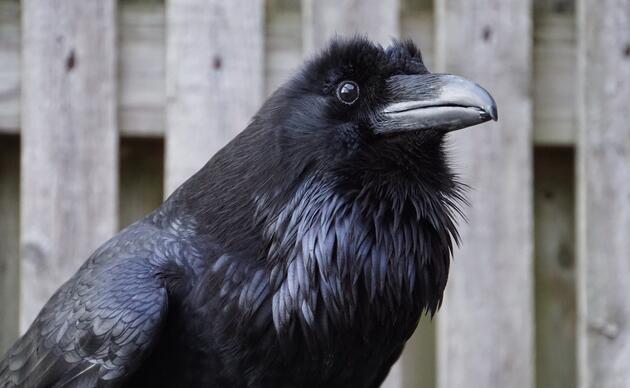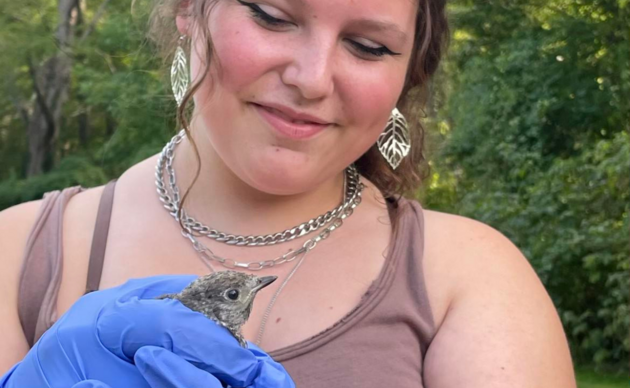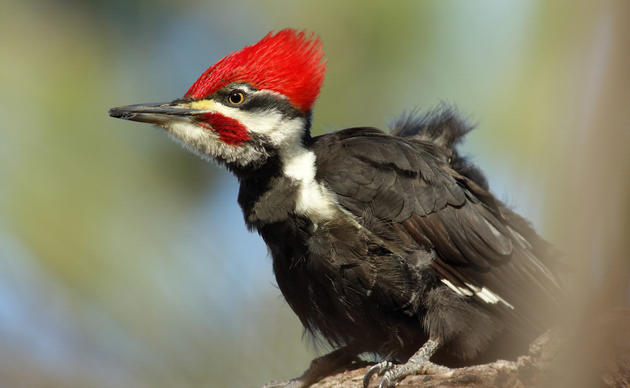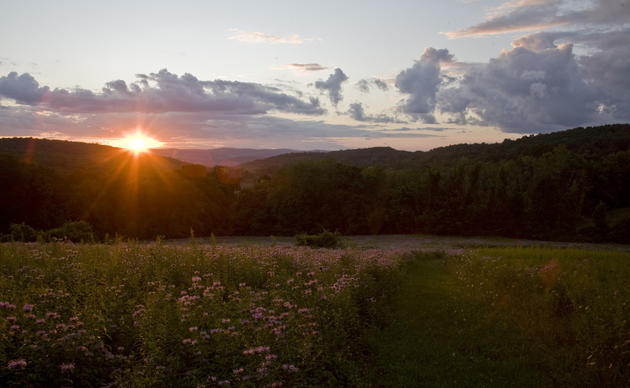Brought to Sharon Audubon Center: July 27, 2010
History: The gentleman that brought Bob to the Sharon Audubon Center shared the story of how he came into possession of this beautiful bird. His neighbor had been keeping this bird for about a month in his house, in a bird cage, as a pet. He continued to explain that once he found out that the neighbor had this bird, he told him that it was not in the best interest of the bird to be kept in captivity and it was also illegal. American Kestrels are listed as a Threatened species in the state of Connecticut and protected under the Migratory Bird Treaty Act. With this information, the neighbor surrendered the bird and it was brought to Sharon Audubon Center's Wildlife Rehabilitation Clinic. It was abundantly clear that this bird was imprinted on humans and thus non-releasable. Imprinted birds do not recognize their own species, were never taught how to recognize and find food, and are unafraid of potential predators—thus, would not survive in the wild.
American Kestrel (Falco sparvarius)
Average height: 9 - 12 inches
Average weight: 3 - 6 oz
Wingspan: 20 - 24 inches
Description: The American Kestrel is smallest and most common falcon in North America, and one of the most colorful. Males have a rusty back and tail, blue-gray wings and head, and a lightly spotted chest and belly. The larger female also has a rust colored back and tail, but duller brown wings barred with black and streaking on the chest. Both sexes also have a “mustache” or dark lines below the eyes that help to deflect sunlight away from the eyes of this small raptor. Falcons are also distinguishable from other hawks by their long, slender, pointed wings and long tails.
Call: Their call is a loud series of “klee-klee-klee.”
Habitat: American Kestrels prefer open habitats such as farmlands, fields, marshes, deserts with large cacti, and forest edges and openings. They can also be seen perching on telephone wires along roads and in suburban areas.
Range: Common throughout North, Central, and northern South America, though deforestation and habitat loss have lead to population decline in some areas.
Diet: Often seen hovering as they search for food, their diet is primarily insects, rodents, and other small birds, which they catch in flight.
***American Kestrels are listed as a Threatened species in the state of Connecticut.
How you can help, right now
Learn & Explore
Where birds thrive, people prosper. Help us transform local communities into places where birds flourish. Learn what you can do to nurture wildlife, nature, and conservation in Connecticut.
Support Our Work
Through land stewardship, science, education, and advocacy, we work to preserve habitat and protect bird species that are of state, national, and global concern. Your gift makes a difference.
Join Our Family
When you become a member of Sharon Audubon Center, you are protecting critical woodlands and a natural heritage for generations to come. Help us do great things.





